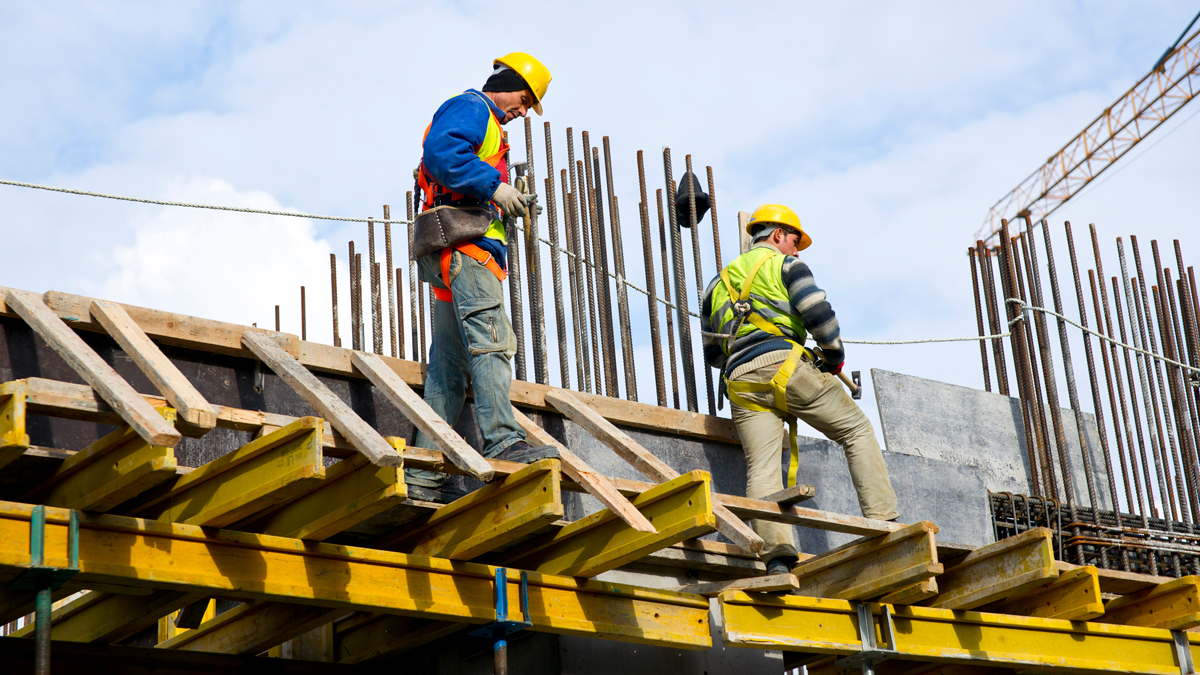
The building industry is infamous for its high risks and dangers that it poses on its workers. According to OSHA, the Occupational Safety and Health Administration, 1 out of every 5 deaths related to work in the whole country is related to this line of work. Fatalities aren’t the only thing with dangerously high ratios; injuries are extremely common in such a line of work. We’ll be presenting the most popular ways used to reduce the risks associated with such sites.
Reducing Trips, Slips, and Falls
Since the work environment of building sites are filled with odd terrains and earth-moving machinery, it’s not that hard to slip, trip, and fall. These hazards can lead to a very dangerous situation if they are not dealt with swiftly. Whether the building is far from completion or almost done, the risks associated cannot be ignored at any phase. This is why it’s important to have a fall protection system in place, which is a system that provides workers with safety equipment that can help them avoid risky situations associated with walking around the site. Any holes at a dangerous elevation in the site should be guarded with rails, lights, and safety nets to prevent any mishaps.
Protection from Falling off
Amongst the many dangerous accidents that workers have on the job, falls happen to be the most common type of accident. This doesn’t come off as a surprise because most workers operate and work in environments that are at very high elevations. Being on a scaffold can leave a lot of workers vulnerable to electrocution and falling objects that can then lead to falling from the scaffold. This is why it’s important to design the scaffold with safety being the first priority, and ensure that it is designed by someone who has the workers’ safety in mind.
Falls are amongst the common accidents that construction workers file compensation claims for. If you happen to be a victim of such an accident, you must file a claim with workers’ compensation. Any scaffold erected in a site should be thoroughly inspected to ensure that it’s still at its tip-top shape to avoid any problems. They should always be away from electrical lines, covered with rails, and decked to allow comfortable movement on the scaffold.
Dealing with Toxic Materials
Many people may not realize that what they need to worry about doesn’t only involve heavy machinery and falls. Toxic materials used in the erection of buildings such as asbestos, cement, dust, and gases can be a silent yet deadly hazard. These materials pose a myriad of respiratory risks on workers, and what makes it worse is that its harmful effect can take a lot of time to show on a worker. Depending on the type of chemical or material inhaled, a worker can continue working for weeks before they show symptoms of toxicity. This is why it’s important to integrate personal protective equipment policies into place to ensure that workers are able to breathe cleanly. It’s always better to minimize the risk and only allow those permitted to work in such an environment with PPE to reduce the chances of other workers getting affected.
Heat and Fatigue Awareness
It’s not uncommon for workers to start feeling exhausted during the middle of work, which is understandable when you take into consideration that they are wearing heavy protection equipment and are under the sun for long durations. What makes this quite dangerous is that it can make their reactions and movements much more delayed, leading to more serious injuries. It’s important to increase the awareness of workers to help them realize that they should stop and rest before they jeopardize their lives and others. The usual symptoms of fatigue and heat strokes are dizziness, reduced vision, headache, and muscle cramps. To be able to deal with the heat in hot environments, it’s advisable to provide cold water on the site and remind workers to drink at least once every hour.
Electrocution Prevention
Electrocution happens to be one of the most infamous and common accidents that befall workers in a site. It can occur very quickly and it can leave very little time to get medical help, making it quite fatal, especially when you take into consideration the involvement of raw power lines that have very high voltage and amperage. The good news is that electrocution can be combated easily if you ensure that the work environment is properly inspected in addition to providing effective personal protective equipment.
These accidents can cost companies millions of dollars in compensation alone, let alone legal repercussions. These sites are serious work environments that have very limited forgiveness for mistakes, which is why it’s the responsibility of both worker and employer to ensure that it is as safe as possible.




